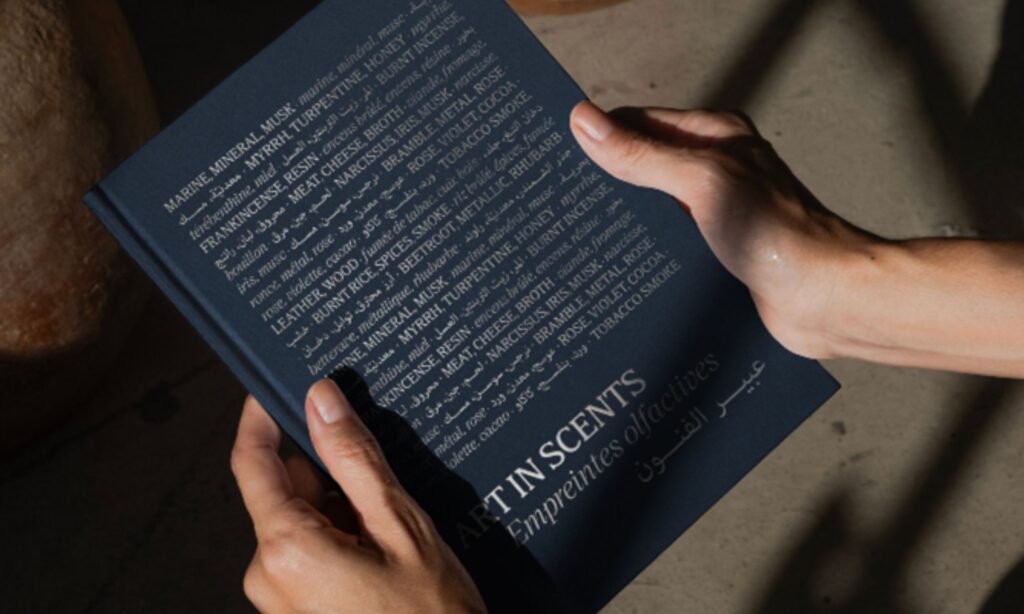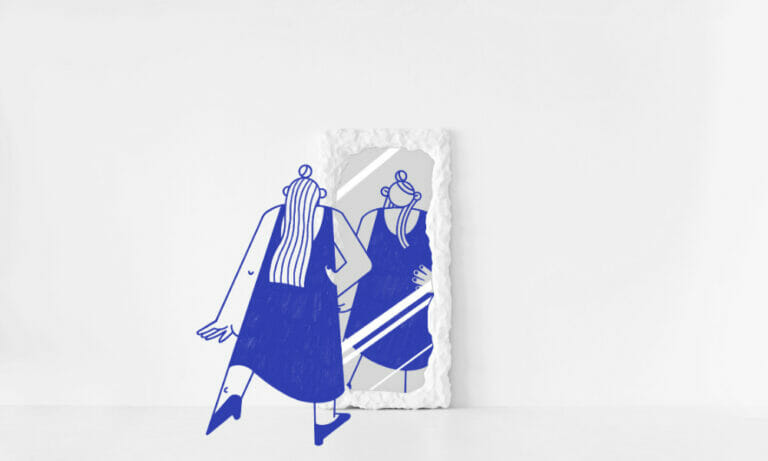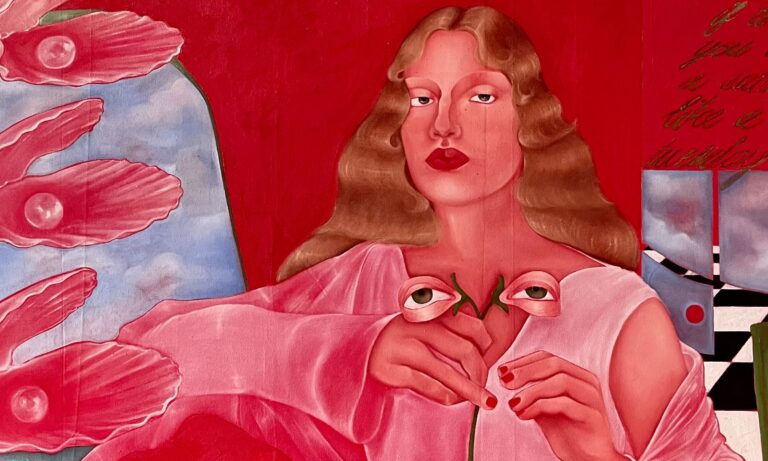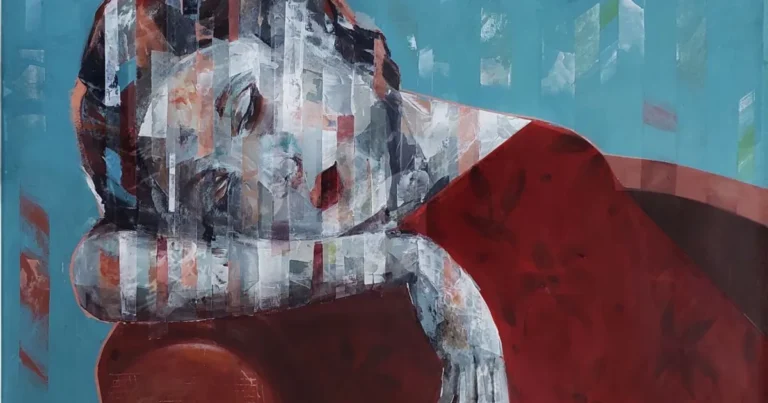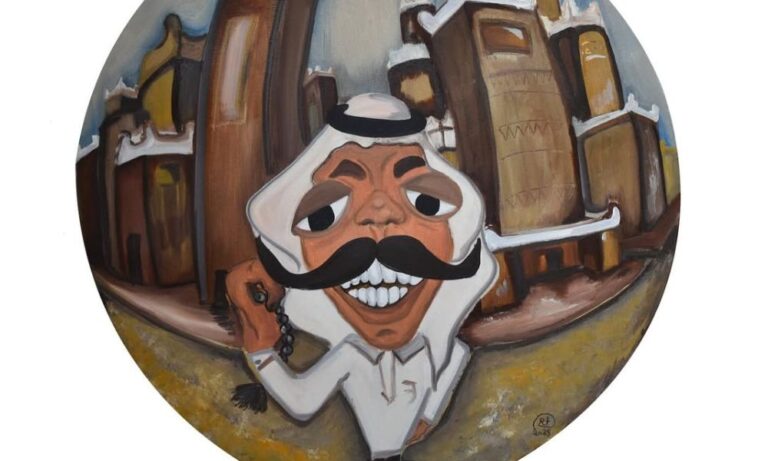Scent and art have always shared an unspoken intimacy. Both linger, both evoke memory, and both turn the invisible into something deeply felt. At Louvre Abu Dhabi, that connection takes on new form through Art in Scents, a pioneering collaboration with fragrance house Givaudan that invites visitors to smell art as they would observe it. The museum’s galleries now hold not only colour and texture but aroma, as ten bespoke perfumes reinterpret its most celebrated works into olfactory narratives.
Running from the end of October, the guided experience transforms the museum into a living archive of fragrance. Each visitor receives a specially crafted booklet that releases scent with every page. The technology is subtle but transformative. Through micro-encapsulation, perfume is infused within the paper itself, allowing art to unfold through the quiet act of turning a page.
The perfumers behind this project, Dalia Izem and Gaël Montero of Givaudan, approach each piece as both chemists and historians. Their interpretations are rooted in emotion, architecture, and time. The result is a sensory journey through cultures and centuries, where incense becomes a language of devotion and floral notes carry traces of Ottoman gardens.
Among the most intriguing compositions is A Universal Breeze, a signature scent created as a tribute to Louvre Abu Dhabi’s architecture. It mirrors the museum’s dome, light, and coastal landscape through marine, mineral, and musk notes layered with solar florals and incense. Diffused at the entrance, the perfume greets visitors with a breath of sea air and sun-washed stone, embodying the museum’s dialogue between land and water, East and West, structure and sky.
The guided tour deepens this dialogue through nine artworks, each reinterpreted in scent. Ancient Egypt’s Image of a Queen or a Goddess becomes an offering of myrrh, turpentine, and honey, echoing the sacred incense once burned in temples. Bernhard Strigel’s Angel with Thurible exhales frankincense and resin, capturing the rhythm of worship. A still life by Jérémie Plume fills the air with the warmth of bread, cheese, and broth, while Ottoman ceramics from Iznik bloom through narcissus and musk. Each perfume carries its own atmosphere, its own echo of history.
The selection spans centuries and continents. Edward Burne-Jones’s The Prince Entering the Briar Wood smells of bramble and rose, balancing beauty with peril. Renoir’s The Cup of Chocolate is softened with cocoa and violet, its sweetness restrained by powdery floral tones. Caillebotte’s The Bezique Game feels dense and human, with tobacco and leather thickening the space like the smoke of a Paris salon. More contemporary works, such as Maha Malluh’s Food for Thought – Al Muallaqat, return to the familiar scents of kitchen and community, blending rice, spice, and smoke as acts of memory. Even Kazuo Shiraga’s 1960 Chirisei Kyubiki finds expression in beetroot and metal, its chaos preserved in scent.
The project’s power lies in its simplicity. By transforming the act of viewing into one of smelling, Art in Scents reimagines how audiences engage with art. The sensory link between perfume and painting has existed for centuries, from Renaissance courts where artists and alchemists collaborated, to 20th-century avant-garde experiments that fused image and aroma. Here, that lineage continues in a contemporary form, connecting global traditions through scent rather than sight.
On October 25, the museum will host a special talk with Izem, Montero, and Givaudan historian Eugénie Briot, who will discuss the translation of visual masterpieces into olfactory experiences. It is an invitation not only to understand the process but to reflect on how scent preserves culture — how a fragrance, like a painting, can hold time within it.
In Art in Scents, Louvre Abu Dhabi has found a new way to tell old stories. The past breathes again, not through color or sound, but through the invisible art of perfume.
ALSO READ: GIRL MATH EXPLAINS WHY OWNING MULTIPLE “INVESTMENT” BAGS ACTUALLY MAKES SENSE.
